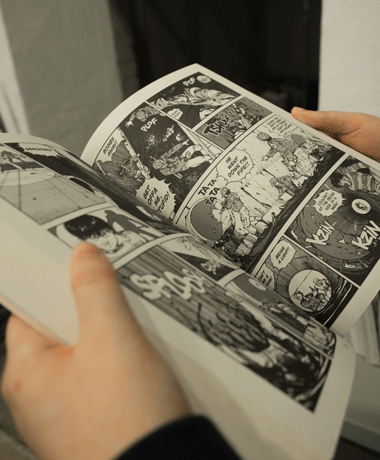Design Thinking is a design methodology that provides a solution-based approach to solving problems.
It is about taking a disciplined, objective and methodical approach to solving a design problem: clearly defining the challenge, creating multiple solutions, picking the best and executing.
The method has been described as more of a mindset then a linear tool. It involves being mindful of what you can do to solve your problem rather then following the set pattern and process.
It also puts the audience at the heart of the problem and the process. For storytelling, this is key.
Five stages of Design Thinking
The design thinking process can be broken into five different stages. Empathise, define, ideate, prototype and test.
 1. Empathise
1. Empathise
This is the first step in Design Thinking. It is to allow you to gain an empathic understanding of the problem. During this stage people usually consult with experts and those working in the field. This allows you to gain a unique insight into the problem.
2. Define
This is where you put together the information you have gathered during the previous stage. You will be able to define your core problems. While doing this, you should always keep the audience in mind. You problem should be defined in a human focused way.
3. Ideate
Once defined you can begin establishing ideas to solve your problem. During this phrase it is important to come up with as many ideas and solutions to your problem as possible. Use a variety of brainstorming techniques to develop more ideas.
4. Prototype
Your team can now start putting your solutions into action. Use scaled down versions of ideas or prototypes that can be shared and tested among your team. By doing this you may possible identify the best solution to your problem. If not, your team will have a better idea of which approach to take.
5. Test
While this the final stage it is one which is often repeated. The results gained during the testing phrase are often used to redefine the problem. This in turn leads to more testing. Once testing is complete and the problem can be addressed and the issue solved.
Design Thinking and storytelling

But how can this process help tell stories?
This five stage process can be used in the narrative process. It allows you to use the process to correctly and effectively leave your mark on your audience. For brand storytelling the design problem is identifying and delivering the meaning of your story in the mind of your audience in the most memorable way.
You begin by understanding your problem. Researching how other brands in your field develop and tell their story.
You can define this problem by examining exactly what you need to be achieved. Your need to create a thought-provoking and engaging story for your brand.
Next you need to come up with ideas for your brand story. Come up with differing angles, possible storylines and different ideas. Ask all the members of your team to help. This will help you come up with as many ideas as possible.
Once you have gathered all the ideas you can scale them down to the best. Write shortened versions of these stories and circulate them to your team. Gather feedback both positive and negative. This will allow you to find the best story.
Once your story has been selected you can begin testing. share it among a small section of your audience. The feedback from these tests will allow you to improve your story and have it perfected before its official launch.
